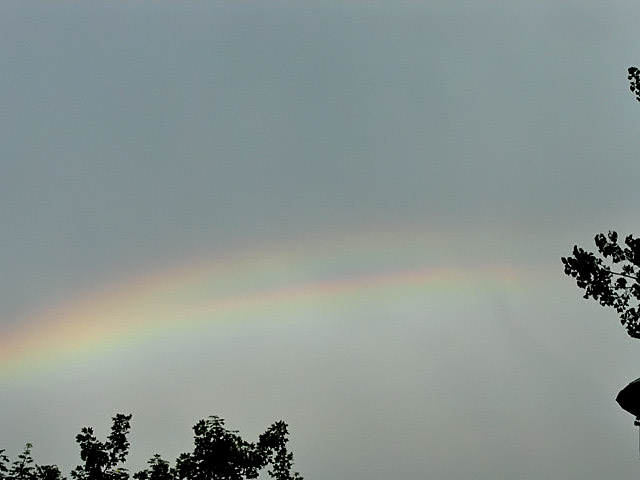Explanation
During heavy rain showers, a distinct split at the top vertex of the rainbow is sometimes observed, often appearing for just a few seconds to several minutes. For a long time, there were only a few observations of this phenomenon, so its origin could only be speculated. It is only in recent years that the split has been more frequently recorded through continuous observation, allowing new theories to be developed based on some detailed observations. Since both arcs appear equally bright in all observations, refraction by ice particles (as found in the upper part of a shower cloud) is ruled out. The most likely cause is that non-spherical raindrops produce one or both arcs. Small raindrops are hardly changed due to surface tension during free fall, but large drops can be flattened by air resistance or even oscillate between flattened and elongated spheroids. The greater the flattening, the smaller the angular distance of the resulting rainbow from the anti-solar point. In practice, this means that sunlight must simultaneously fall on raindrops of different sizes to create this split. Since it has only been observed in powerful shower and thunderstorm clouds after great heat, it can be assumed that the small, non-deformed raindrops evaporate just below the cloud. This would explain why the arc is only visible for a short time and exclusively in the upper area.

